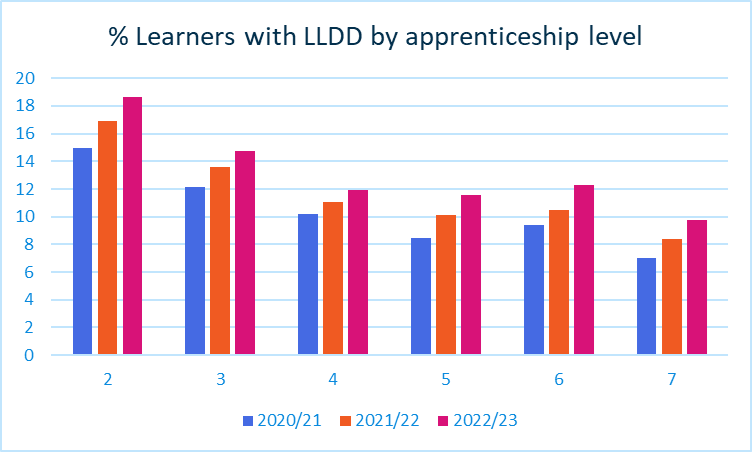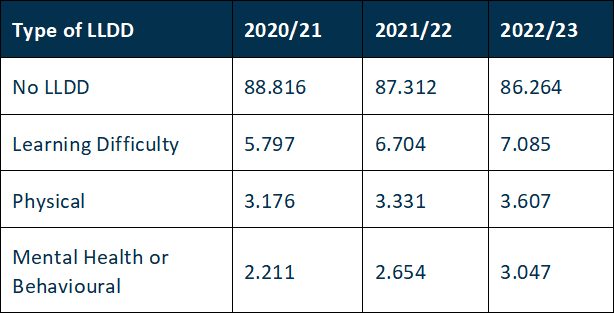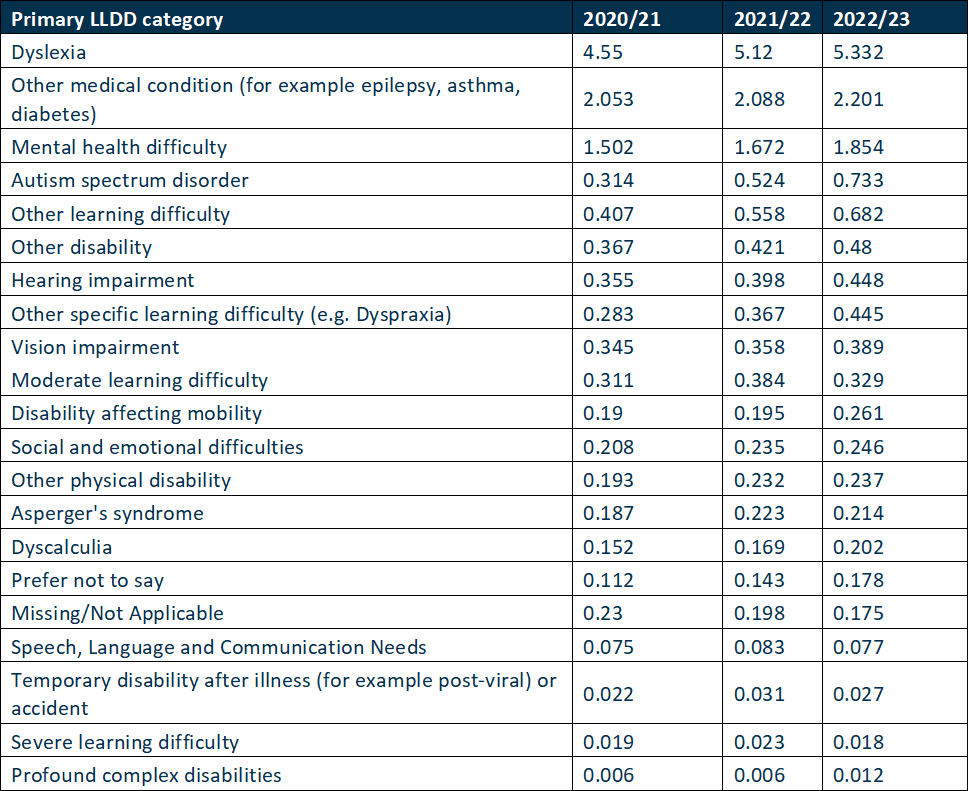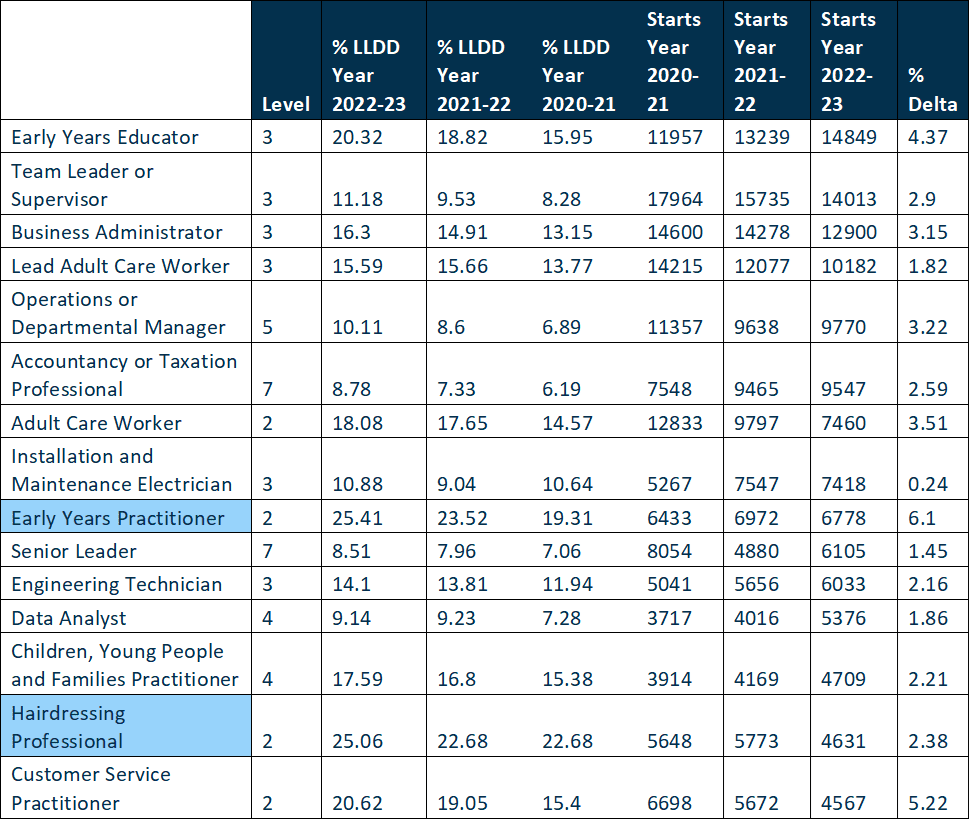The past two years has seen a 2.6% increase in Apprentice Learners with Learning Difficulties and Disabilities
Aptem’s analysis shows that the percentage of apprentice learners reporting a learning difficulty or disability (LLDD) has risen dramatically over the past two academic years. Overall rates have grown from 11.9% of apprentices in 2020/21, to 13.4% in 2021/22 and then to 14.5% in 2022/23 which will have a significant impact on training providers in supporting learners to successfully complete their apprenticeships.
It is estimated that up to a fifth of adult learners have a learning difficulty for which they might need support (McLoughlin and Doyle, 2017). However, many learners either do not disclose their learning difficulty or are unaware of it. In this article, we summarise some of our findings based on Freedom of Information requests regarding the frequency of specific learning difficulties reported in apprenticeship individual learner records starting between 2020 and 2023. We believe the number of learners with learning difficulties and disabilities will be even higher than the data shows.
Overall reported LLDD rates are increasing year on year. This may have been in anticipation of the 2023/24 funding rules requiring formal screening for learner support, as well as the availability of initial screening tools such as Aptem Assess.
In 2022/23, we found that 7.1% of learners reported a learning difficulty as their primary LLDD. This compares to 3.6% reporting a physical difficulty or disability, and 3.0% reporting a mental health or emotional related difficulty.
Our analysis of the primary reported LLDD category found that Dyslexia was most common. It affects 4.6% of learners in 2020/21, increasing to 5.3% of learners in 2022/23. This means this group has proportionately grown by a sixth. The next highest individual categories were “other medical conditions (e.g. epilepsy etc)” which increased from 2.1% to 2.2%, and ‘Mental Health difficulty” which increased from 1.5% to 1.8% of apprentices during this time period.
LLDD rates have increased across all apprenticeship levels. The increases are much higher across level 2 apprentices where the rates are now 18.7% compared to 14.9% two years ago. Unsurprisingly, learners at higher apprenticeship levels report lower levels of LLDD, as without support they would have been less likely to progress through lower educational levels. For example, 7.5% of level 2 learners report dyslexia. This is almost double the rates reported at levels 5 and above.

There was also variation across different apprenticeship standards. Among the largest standards in 2022/23, the highest LLDD rates were found in apprentices starting on Early Years Practitioner (25.4%), Hairdressing Professional (25.1%) and Early Years Educator (20.3%). There were also high LLDD rates for apprentice starts on the Adult (18%) and Lead Adult (15.5%) care worker standards.
The 2023/24 funding rules state that training providers must undertake a screening exercise for learning support as part of the initial assessment. It is also widely accepted that it’s good practice to assess and address an apprentice’s learning support needs. Aptem Assess can help in the identification of previously unknown support needs, with guidance on next steps learners can be helped to overcome learning barriers to succeed.
References:
McLoughlin, D., & Doyle, N. (2017). “Psychological assessment of adults with specific performance difficulties at work”. The British Psychological Society. https://www.bps.org.uk/guideline/psychological-assessment-adults-specific-performance-difficulties-work.
References tables:




